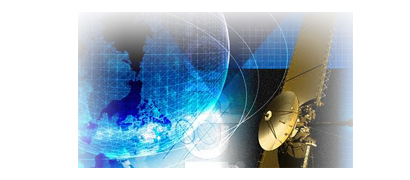|
|
 |
Knowledge Is Key
For Intelligent Decisions
Satellite Logic is a leading,
authoritative source of information in
the Satellite Industry. Located in the
heart of the Silicon Valley, Satellite
Logic provides one of the most
valuable and comprehensive
knowledge bases on the Satellite
market! This is a primary Worldwide
information center which enables our
clients to analyze, evaluate, inquire
and select their best tailored
solutions. Our company sets the
industry standards for targeted
buying leads, reflecting a dramatic
advance over traditional marketing
solutions.
|
|
|
 |

Today, most satellite television viewers receive their programming though
what are known as Direct Broadcasting Satellite providers, who select
different broadcasts and then package them for sale to the consumer in a
form and price that is similar to the competition (i.e. Cable television
broadcasters). It should be noted that unlike most cable television
broadcasts, all satellite television broadcasts are in digital (Ku frequency
range - 12-14 GHz). What this means for the consumer is that they get a
much improved picture and sound quality.

Both major satellite broadcasters in the USA compress their programming
via the MPEG-2 format. This allows them to shrink the data from 270 mbps
to anywhere from 5 to 10 mbps depending on the nature of the programming.
Following compression of the data, encryption usually takes place. This is
done in order to prevent non-subscribing customers from receiving the
information for free. The information is scrambled in such a way that the
receiver can only unscramble the information if it has the correct algorithms
and security keys. Following encryption and compression, the data is
broadcasted in this format to the satellites, amplified by the satellites and
then sent back to Earth where is it picked up by the consumer's satellite dish
and receiver. If the broadcaster is broadcasting a newscast, a smaller
compression can typically be used, since much of the image stays the same
most of the time. When broadcasting an action film on the other hand, the
compression is usually a little higher, since the image on the screen is rarely
constant.

There are 2 sources from which direct broadcasting satellite providers draw
channels from: Nationals turnaround channels (such as Fox, CNN, Discovery)
and local channels (such as NBC, CBC, PBS). It is worth noting that the
turnaround networks provide programming for cable TV as well, but have
separate distribution centers that are responsible for sending the information
up to orbiting satellites. The satellite broadcaster then uses a large dish to
pick up these analogue and digital signals. Local networks broadcast over the
airwaves, which means that the satellite broadcaster has to use fiber-optic
cables to transfer the information from the local stations to a local facility,
which would then broadcast the information to the central broadcast center.
The central broadcast center then converts all of the collected programming
into uncompressed digital streams (approximately 270 mbps/channel). Next,
the uncompressed stream is compressed in order for the satellite to be able
to handle the information.
|
|
|
|
